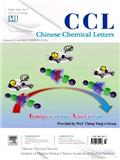
中国化学快报(英文版)(Chinese Chemical Letters) 知网万方维普目次
- CSCD
- 科核
- 高T3
- 主管单位:
中国科学技术协会
- 主办单位:
中国化学会、中国医学科学院药物研究所
- 国际刊号:
1001-8417;EISSN1878-5964
- 国内刊号:
11-2710/O6
- 学科分类:
- 字数:
4000-36000
- 有无基金:
/有基金 100.0%
- 周期:
CN外文-月刊
- 特殊属性:
第一批认定学术期刊
- 电话:
010-63165638(202102期)
- 邮箱:
cclbj@imm.ac.cn(202102期)
- 复合因子:
2.752
- 综合因子:
2.006
- 收录:
知网,万方,维普目次
- 级别:
CSCD,科核,高T3
- 杂志社官网:
- 投稿网址: http://www.chinchemlett.com.cn/
期刊简介
《中国化学快报》期刊已被查看: 次
更新频次
单位占比
一作占比
/有基金-100.0%投稿指南
1、投稿方式:在线投稿。
2、刊内网址:http://www.chinchemlett.com.cn
http://www.elsevier.com/locate/cclet
投稿系统:
https://www.editorialmanager.com/CCLET
3、刊内邮箱:cclbj@imm.ac.cn
4、刊内电话:010-63165638
5、出刊日期:月刊,每月15日出版。
6、官网微信公众号:ChinChemLett
2021年5月19日星期三
《中国化学快报(英文)》投稿须知
【官网信息】
Information for authors
Chinese Chemical Letters (CCL) (ISSN 1001-8417) was founded in July 1990. The journal publishes preliminary accounts in the whole field of chemistry, including inorganic chemistry, organic chemistry, analytical chemistry, physical chemistry, polymer chemistry, applied chemistry, etc., satisfying a real and urgent need for the dissemination of research results, especially hot topics. The journal does not accept articles previously published or scheduled to be published. To verify originality, your article may be checked by the originality detection service CrossCheck.
The types of manuscripts include the original researches and the mini-reviews. The experimental evidence necessary to support your manuscript should be supplied for the referees and eventual publication as Electronic Supplementary Information. The mini-reviews are written by leading scientists within their field and summarized recent work from a personal perspective. They cover many exciting and innovative fields and are of general interest to all chemists.
1. Submission
The contents of papers are the sole responsibility of the authors, and publication shall not imply the concurrence of the Editors or Publisher.
Authors should submit their manuscripts via the online submission at http://ees.elsevier.com/cclet. Authors will be guided stepwise through the creation and uploading of the various files. The system automatically converts source files to a single Adobe Acrobat PDF version of the article, which is used in the peer review process. Please note that even though manuscript source files are converted to PDF at submission for the review process, these source files are needed for further processing after acceptance. All correspondence, including notification of the editor's decision and requests for revision, takes place by e-mail and via the author's home page.
The following items should be submitted via the online submission page:
1. Cover letter: highlighting the novelty, significance, and urgency of the submitted work, which merits rapid publication and providing details of other relevant information, e.g., submitted or in press manuscripts.
2. Graphical abstract for the contents list (submitted as a separate document).
3. Manuscript.
Authors are also suggested to supply the names of two suitable referees for their manuscript upon submission. Authors are also permitted to provide the names of scientists that they would prefer not to review their manuscript. If the names of non-preferred reviewers are provided, authors are requested to provide a brief note stating why these reviewers should not be used.
2. Graphical abstract
Graphical abstract is mandatory for our journal. It should summarize the contents of the article in a concise, pictorial form designed to capture the attention of a wide readership online. Authors must provide images that clearly represent the work described in the article. Graphical abstract, including title, authors, affiliations, the graph, and short abstract in one or two sentences, should be submitted as a separate file in the online submission system.
3. Main text
Authors are asked to divide your article into 4 sections. They are “1. Introduction”, “2. Experimental”, “3. Results and discussion” and “4. Conclusion”. The “Acknowledgment” section is optional.
Text should be subdivided in the simplest possible way consistent with clarity. Headings should reflect the relative importance of the sections. Ensure that all tables, figures, and schemes are cited in the text in numerical order. The preferred position for chemical structures should be indicated. Trade names should have an initial capital letter. All measurements and data should be given in SI units where possible, or in other internationally accepted units. Abbreviations should be used consistently throughout the text, and all non-standard abbreviations should be defined on first usage.
Title. Concise and informative. Titles are often used in information-retrieval systems. Avoid abbreviations and formulae where possible.
Author names and affiliations. The authors’ names are listed with the given name first and surname last (capitalizing the first letter, for example An-Min Lin, please note there is a hyphen between An and Min). Present the authors' affiliation addresses (where the actual work was done) below the names. Indicate all affiliations with a lower-case superscript letter immediately after the author's name and in front of the appropriate address. Provide the full postal address of each affiliation, including the country name.
Corresponding author. Clearly indicate who will handle correspondence at all stages of refereeing and publication, also post-publication. Ensure that the e-mail address is provided and contact details must be kept up to date by the corresponding author.
Changes to authorship. This policy concerns the addition, deletion, or rearrangement of author names in the authorship of accepted manuscripts before publication. Requests to add or remove an author, or to rearrange the author names, must be sent to the editor from the corresponding author of the accepted manuscript and must include: (a) the reason the name should be added or removed, or the author names rearranged and (b) written confirmation (e-mail or letter) from all authors that they agree with the addition, removal or rearrangement. In the case of addition or removal of authors, this includes confirmation from the author being added or removed. Requests that are not sent by the corresponding author will be forwarded by the editor to the corresponding author, who must follow the procedure as described above. Note that publication of the accepted manuscript in an online issue is suspended until authorship has been agreed.
Abstract. Authors must include a short abstract of approximately that states briefly the purpose of the research, the principal results, and major conclusion(s). References and compound numbers should not be mentioned in the abstract unless full details are given.
Keywords. Authors are asked to provide more than three keywords, which will be used for indexing purposes.
Introduction. This should provide a concise summary of the background and the signification of your research, the current development state of this field, and give a clear description of the purpose.
Experimental. This should provide source of the chemical regents, instruments used in the study and should provide sufficient technical information to allow the experiments to be repeated. New method or modifications to existing methods should be described in detailed.
The synthesis of all new compounds must be described in detail. Synthetic procedures must include the specific reagents, products and solvents and must give the amounts (g, mmol, L, mL) for all of them, as well as clearly stating how the percentage yields are calculated. They must also include all the characterization data for the prepared compounds or materials. For multistep synthesis papers, spectra of key compounds and the final product should be included.
Artwork. Figures, schemes, and equations must be cited in the text and numbered in order of appearance with Arabic numerals. All graphics (including chemical structures) must be provided at the actual size that they are to appear (single-column width is 8.4 cm, double-column width is 17.7 cm). Please arrange schematics so that they fill the column space (either single or double), so as not to leave a lot of unused white space. Please ensure that all illustrations within a paper are consistent in type, quality, and size. Color figures may be printed in the journal, provided that the editor considers the color necessary to convey scientific information.
Tables. All tables should be cited in the text, and numbered in order of appearance with Arabic numerals. All table columns should have a brief explanatory heading and, where appropriate, units of measurement. Vertical lines should not be used. Footnotes to tables should be typed below the table and should be referred to by superscript letters. Each table should have a descriptive heading, which, together with the individual column headings, should make the table, as nearly as possible, self-explanatory. In setting up tabulations, authors are requested to keep in mind the column widths (8.4 cm and 17.7 cm), and to make the table conform to the limitations of these dimensions.
Acknowledgements. An acknowledgement section may be included. It should be placed after the manuscript text and before the references.
4. References
Please ensure that each reference cited in the text is also present in the reference list and indicate references by number(s) in square brackets in line with the text. Please note that the title is mandatory. For example:
Reference to a journal publication
[1] J. van Geer, J.A.J. Hanraads, R.A. Lupton, et al., The art of writing a scientific article, J. Sci. Commun. 163 (2010) 51-59.
[2] Z. Wu, Z. Zhen, J.H. Jiang, G.L. Shen, R.Q. Yu, Terminal protection of small-molecule-linked DNA for sensitive electrochemical detection of protein binding via selective carbon nanotube assembly, J. Am. Chem. Soc. 131 (2009) 12325-12332.
Reference to a book:
[3] W. Strunk Jr., E.B. White, The Elements of Style, fourth ed., Longman, New York, 2000.
Reference to a chapter in an edited book:
[4] G.R. Mettam, L.B. Adams, How to prepare an electronic version of your article, in: B.S. Jones, R.Z. Smith (Eds.), Introduction to the Electronic Age, E-Publishing Inc., New York, 2009, pp. 281-304.
5. Supporting information
Some experimental details and the characterization data can be provided as electronic supplementary information. This will depend on the nature of the research being reported.
It is the responsibility of the author(s) to provide the reviewers with the necessary information to evaluate the merit of the manuscript in terms of its scientific content. Failure to provide the necessary experimental evidence and data may result in the manuscript being withdrawn by the Editor.
Supplementary data must be saved in files separate from those for the manuscript and figures, and all file names must be supplied. Supplementary files should either be referred to within the text of your manuscript in the same way as for figures or tables, or their presence be indicated by adding a paragraph entitled "Supplementary data" at the end of the manuscript, detailing which data are supplied. In addition, authors should also provide a concise and descriptive caption for each file.
When supplying supplementary data, authors must state whether the data files are either (i) for online publication or (ii) to be used as an aid for the refereeing of the paper only. All supplementary data will be subject to peer review.
6. Proofs
Proofs will be dispatched via e-mail and should be returned with corrections as quickly as possible, normally within 48 hours of receipt. Please check carefully before replying, as inclusion of any subsequent corrections cannot be guaranteed. Proofreading is solely your responsibility. Significant changes will only be considered at this stage with permission from the Editor. Any amendments will be incorporated and the final article will then be published online as an Article in Press. We will do everything possible to get your article published quickly and accurately. Therefore, it is important to ensure that all of your corrections are sent back to us in one communication. Note that we may proceed with the publication of your article if no response is received.
7. Publication fee
According to relevant policies and international practice, Chinese Chemical Letters (CCL) charges publication fee for all manuscripts to be published, ¥260/page for domestic manuscripts and $500/paper for international manuscripts. We will give permission to those who apply for a waiver.
上一篇:心血管病学进展下一篇:中华医学美学美容杂志
《中国化学快报》同类化学期刊
-
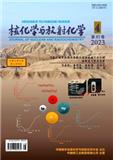
核化学与放射化学
北核,CSCD,科核,高T2
CN中文-双月刊影响因子0.618
-
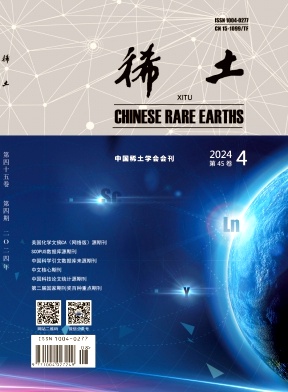
稀土
北核,科核,CSCD扩,武A-,高T2
CN中文-双月刊影响因子1.041
-
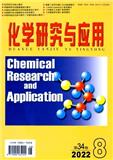
化学研究与应用
北核,科核,武B+
CN中文-月刊影响因子0.911
-
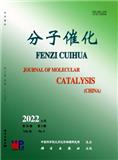
分子催化(中英文)
北核,科核,CSCD扩,武A
CN中文-双月刊影响因子1.802
-
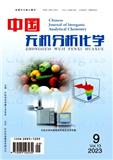
中国无机分析化学(原:中国无机分析化学文摘)
北核,高T3,CACJ-权威,武B+
CN中文-月刊影响因子1.591
-
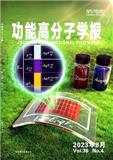
功能高分子学报
北核,CSCD,科核,高T2,武B+
CN中文-双月刊影响因子1.206
-

质谱学报
北核,CSCD,科核,高T2,EI(中国2024),武B+
CN中文-双月刊影响因子1.348
-
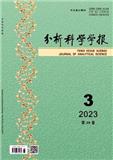
分析科学学报
北核,科核,CSCD扩,武B+
CN中文-双月刊影响因子1.227
常见问题
-
中国化学快报杂志社官网、联系方式是什么?
中国化学快报 投稿网址:http://www.chinchemlett.com.cn/联系电话:010-63165638(202102期)
投稿邮箱:cclbj@imm.ac.cn(202102期) -
中国化学快报杂志是核心期刊么?
中国化学快报是核心期刊,级别是:CSCD,科核,高T3, 是:化学分类下的知网,万方,维普目次收录的期刊。
-
请问你们是中国化学快报杂志社吗?
我们不是《中国化学快报》杂志社。本站主要从事期刊信息展示与期刊推荐,不是任何杂志官网,直投稿件请联系杂志社。本站仅提供免费的学术指导、论文辅导、期刊投稿信息整理收集服务。
-
你们指导服务后可以保证文章被发表吗?
期刊发表的成功与否,主要取决于文章内容的质量。编辑老师会根据研究领域、创新性等多因素进行考量。我们会帮助您理解期刊的发表要求,助力提升发表几率,从而增加发表的机会。
-
晋级论文能否在报纸上发表?
在学术界,论文的发表往往被视为研究者职业发展的重要一环。晋级论文,即为了获得更高职称或学术地位而撰写的学术论文,通常需在专业期刊上发表。然而,许多人可能会问
